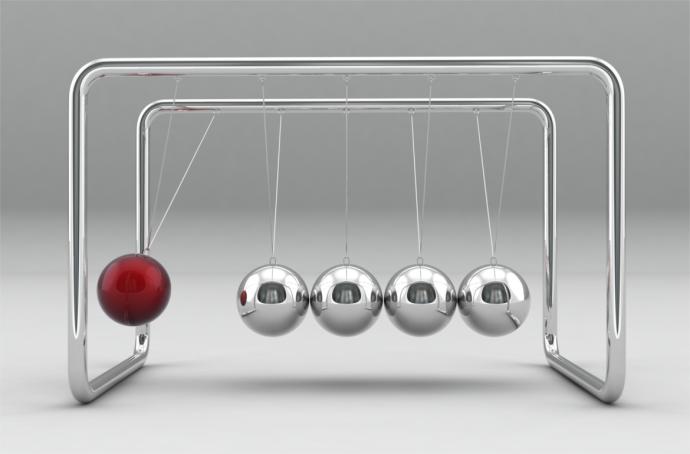If an object is moving, it has momentum. This is what keeps an object moving in the same direction. The more momentum something has, the harder it is to change its direction or bring it to a stop.
An object's momentum is the product of its mass and its velocity. This means a fast, massive object has more momentum than a slow, smaller object. Momentum is a vector quantity. This means it depends on the direction of the object.

So we can work out an object's momentum using the equation:
Momentum = mass × velocity
During an explosion or collision, the total momentum is conserved. This means the total momentum before the event is equal to the total momentum after the event. This is useful for studying collisions in space or stellar explosions.
Isaac Newton showed that the force needed to change an object's momentum is linked to the amount of time it takes. This means you can apply a small force over a long time. Or you can apply a large force over a short time. For example, if you are riding a bike and want to come to a stop, you can either press gently on the breaks over a long time, or press hard on the breaks for a short amount of time.
